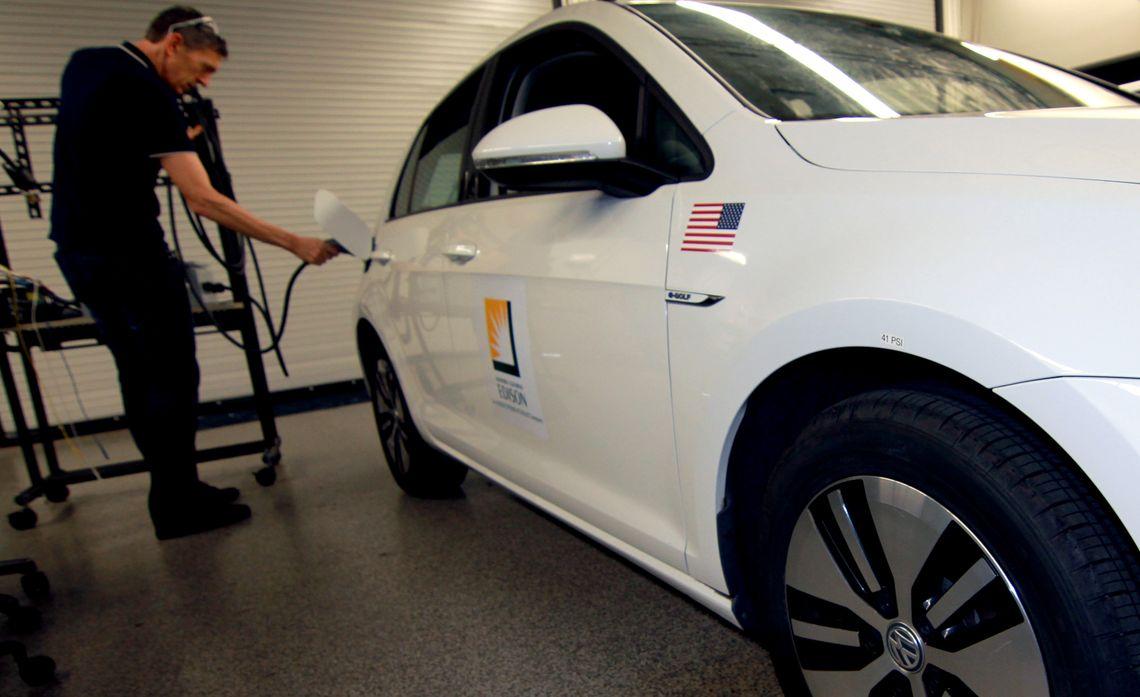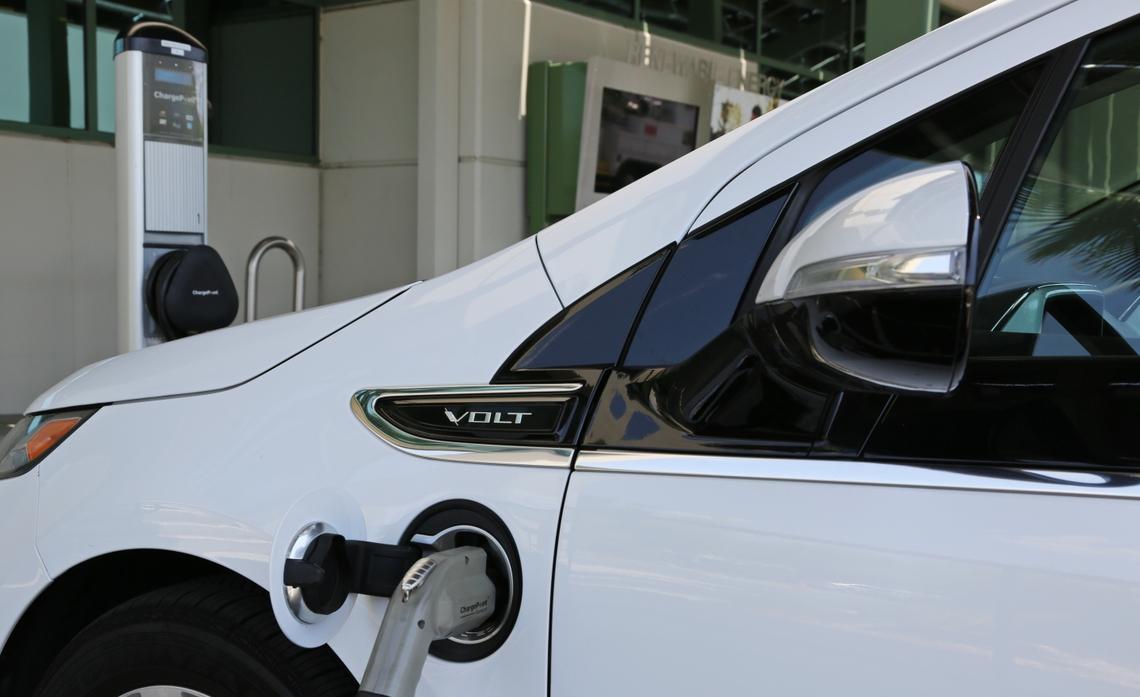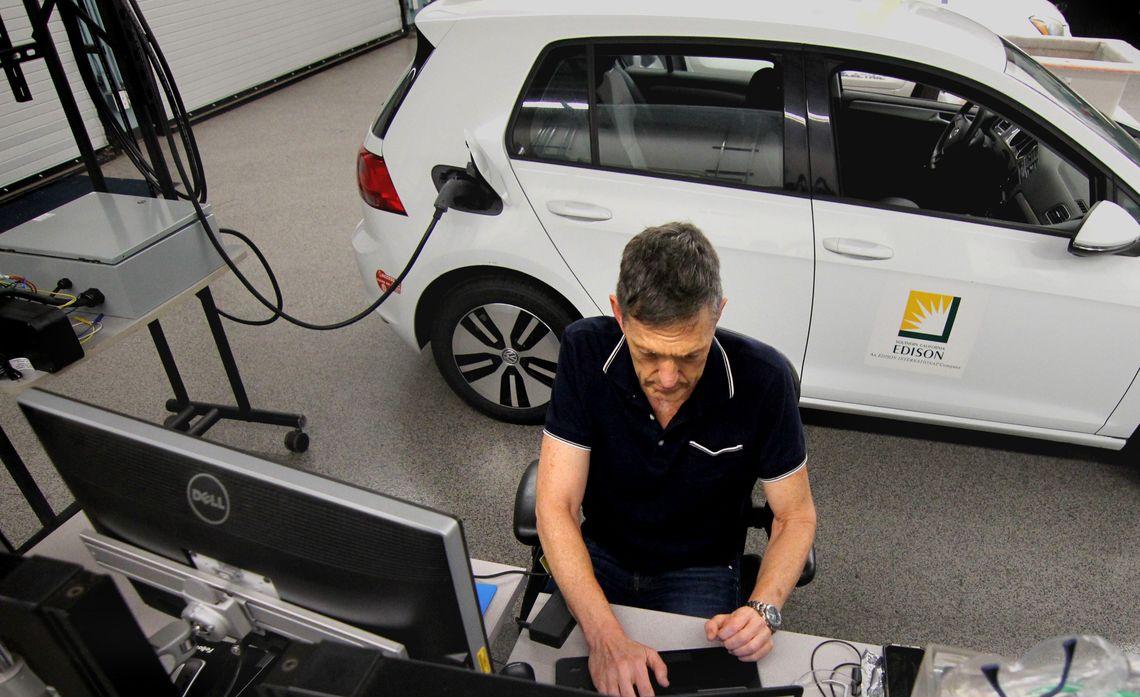Accelerating Vehicle-to-Grid Research
SCE’s work on EV innovations and industry standards is key to a future where parked vehicles bolster the grid through bi-directional charging.
Energized by Edison
Originally published on August 30, 2023
By Jim Hanggi
Jordan Smith tests the future. As a consulting engineer at Southern California Edison’s Grid Technology Innovation Lab, he is part of an SCE team — with multiple industry stakeholders — currently testing emerging uses of electric vehicles.
“How the electrical grid connects to customers, not just with power but with technology, is evolving rapidly,” said Smith. “With that progress, we are preparing to more broadly offer innovative vehicle technologies that were once just a concept.”
Emerging Future EV Uses
Most EVs and chargers only send energy in one direction — to a vehicle’s battery. But more EVs are beginning to be able to reverse the power flow and feed electricity from the battery to a home, a business and even the electric grid. It’s called “bi-directional charging.”
Future grid coordination with vehicles could help balance power demand peaks and offer other advantages. However, there is more to connecting EVs with the grid than simply plugging them in. As this evolution continues, electrical industry standards, codes, regulations and interconnection practices will inform the change.
That’s where SCE’s technical team comes in.
Testing Two-Way Technology
SCE is exploring EV innovations, advancing engineering first in the lab and then in pilots, to introduce them to customers one day. The SCE team has led vehicle-to-grid integration (VGI) testing and standards development for years, working on several vehicle-to-grid pilots, EV charging and control systems demonstrations.
“We are really focused on establishing and evaluating ways our EV customers can benefit from this technology and how this will also help the grid for all customers,” Smith said.
Available to EV owners now is a starting point called V1G, also called smart charging. EVs on the road today can participate in forms of V1G (e.g., Time-of-Use (TOU), Business or Residential Demand Response).
With V1G, EV owners can save on energy costs during off-peak hours. It is an effective way to save money for customers looking to avoid peak pricing.
EV owners with bi-directional charging capabilities — currently permitted and interconnected with SCE — can participate in SCE’s Emergency Load Reduction Program (ELRP). ELRP provides customers financial incentives to use less or return energy during grid emergencies.
Welcoming Future Innovations
“EVs can really be an asset to the grid and grid resiliency,” said Chanel Parson, SCE’s director of Electrification. “We welcome and encourage vehicle-to-grid integration and its future capabilities.
“There is an everyday use for bi-directional vehicles and equipment that, if leveraged well, can benefit our customers and the grid. We are at the forefront of enabling it, helping it become available at scale and set industry standards.”
ABCs of VGI
There are several parts along the way to vehicle-to-grid integration (VGI). Get to know a few of the terms:
- V1G: V1G is smart “uni-directional” charging. It forms the footing for the rest of VGI technologies. V1G involves adjusting the time/rate an EV charges, using Time-of-Use rates to incentivize EVs to charge when there is an excess generation or, more importantly, not to charge when energy capacity is constrained.
- V2H (Vehicle to Home) and V2B (Vehicle to Building): This is where a vehicle’s battery can be used as backup power for a customer’s home or a building of multiple customers. Customers could charge a vehicle from the grid and then discharge the battery as needed to a home or building at another time with the proper standard-conforming equipment interconnected with SCE and permitted.
- V2G (Vehicle to Grid): This is the most complex, costly and uncertain for wide-scale use at this point. To be deployed on a large scale requires more customers to have permitted bi-directional charging equipment interconnected with SCE certified to industry standards. So, small pilots and programs are taking place to better understand the hardware’s safety, reliability and performance. V2G can enable a future where more EV owners can send energy back to the grid to help reduce the peaks in energy demand or meet customers’ needs.
SCE will continue prioritizing customer needs as VGI technologies mature through continued collaboration with vehicle manufacturers, charging station providers and VGI aggregators. The utility plans to implement solutions that let all customers benefit from VGI technology, whether they own an EV or not.
“I think it's really exciting that this is one of the enabling pieces to achieve the vision of the future grid,” Smith said. “This really is the future.”




